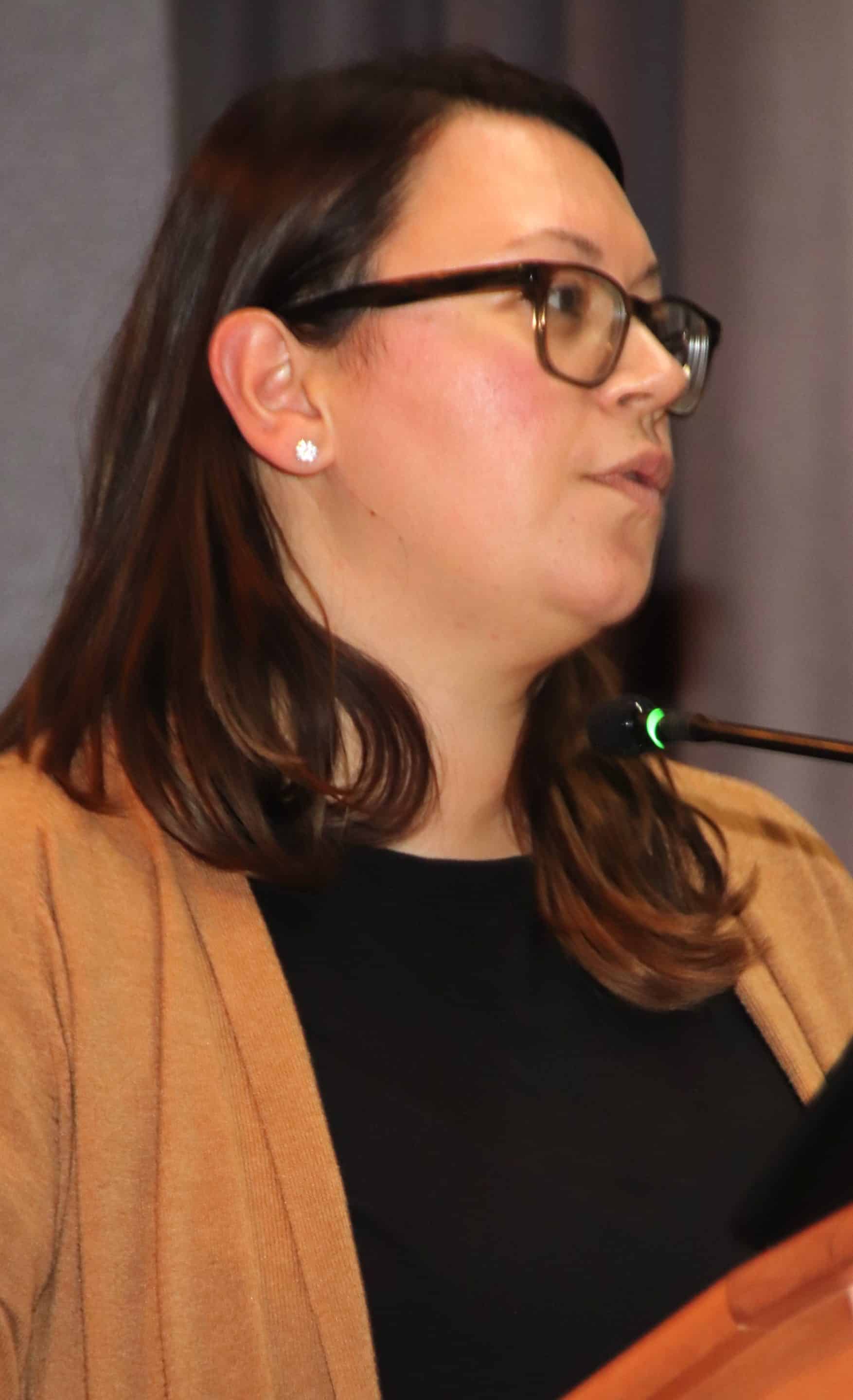Rosa Rodriguez Pion, director of English language education for Agawam schools gives the School Committee an update on multilanguage learners at its Oct. 29 meeting.
Reminder Publishing submitted photo
AGAWAM — Agawam is a diverse school district that rivals some urban districts in terms of language and country of origin for students.
Rosa Rodriguez Pion, the district’s director of English language education, told the School Committee at its Oct. 29 meeting that Agawam currently has 306 English Learners — students whose first language is not English. Those students are from 36 countries and speak 42 different languages, including some languages new to the district, notably Kenya and Rwanda.
She said that 105 of the 306 English learners are being monitored. According to Rodriguez Pion, the state sets criteria for students to meet exiting status, which is when they’ve gained enough English proficiency to no longer be considered an English learner student. “Legally, we still have to monitor them for four years. Notably, we exited 41 students last year, which was great. Most of them were fourth graders going into fifth grade.”
The state sets progress targets in terms of English proficiency and how much English a student needs to gain based on a yearly assessment in January or February.
“Right now, 165 of our students didn’t meet that target. So, we’ve got some work to do,” she said.
Rodriguez Pion said the district currently has 94 first-year students in grades 1-12. Of those, 38% are at level one, the foundational English proficiency level, and need intensive language support. Another 31% are “newcomers” in their first year in the district and require both academic and social support around U.S. schooling and basic English.
The ELE director said 33 of the 94 students are dually coded — they either have a 504 plan because of a disability or an individualized education program. “Not all of them are academic, but they do have one or the other,” she said.
She added that there are also 19 students with limited or interrupted formal education, meaning they’re coming from refugee camps or war-torn countries.
“They’ve had some type of disruption in their learning in between going from where they’re coming from to here, Massachusetts is actually the only state in the country that has guidance around these types of students and instructional practices,” she said.
Rodriguez Pion said Agawam is one of 10 districts chosen to send about 20 coaches, educators and district leaders for training with the state to help teachers support students in this category.
“We’re not pulling teachers out of classrooms. We really want to be intentional about who’s participating in this. We’re including our coaches so they can support classroom teachers with instruction once they’re trained and they feel a little bit more comfortable on this topic.”
A new platform — “ELLevations” — is an initiative that Rodriguez Pion said was implemented this school year to provide educators with differentiated language supports based on students’ English proficiency levels.
“It helps us to identify different demographics that fall under their EL umbrella,” she said.
The platform also includes EL student plans with goals based on WIDA standards — World-class Instructional Design and Assessment, a consortium of states in the U.S. dedicated to the design, implementation of standards and opportunities for English learners. Massachusetts is one of 41 states that has adopted the WIDA standard.
“It gives teachers a tool to help them identify language goals for students. We’re using this with both classroom teachers and EL teachers,” said Rodriguez Pion. “It’s been rolled out to every single teacher in our district — we’ve gotten really great feedback.”
She said teachers, classroom teachers in particular, are excited about having an area they can go to and look at data and have some strategies to use with students and know the expectation for students at different levels.
Another initiative adopted by the district is a newcomer resource and curriculum to help the needs of new EL students coming in to schools.
“There aren’t a ton of resources for some of the new languages, so we’re looking at how we can best support these students,” she said.
At the high school there’s a new student ambassador initiative. She said it identifies students who are welcoming, speak other languages and have been in the district for a while.
“They’re welcoming brand-new students, giving them tours, having them go with them to classes, helping them get settled, creating a peer they can go to or just sitting with at lunch,” said. Rodriguez Pion.
She told the committee that the district is partnering with the state Department of Elementary and Secondary Education on a family-school initiative. “This isn’t just for EL parents. We’re looking at ways as a district that we can support families and identifying different needs of how we welcome our families and what are the needs.”
The initiative, however, also will support EL families, said Rodriguez Pion. “We want to bring them into the schools and build that partnership — particularly those who don’t speak English, who may not feel comfortable coming to the schools and engaging in conversation.”


